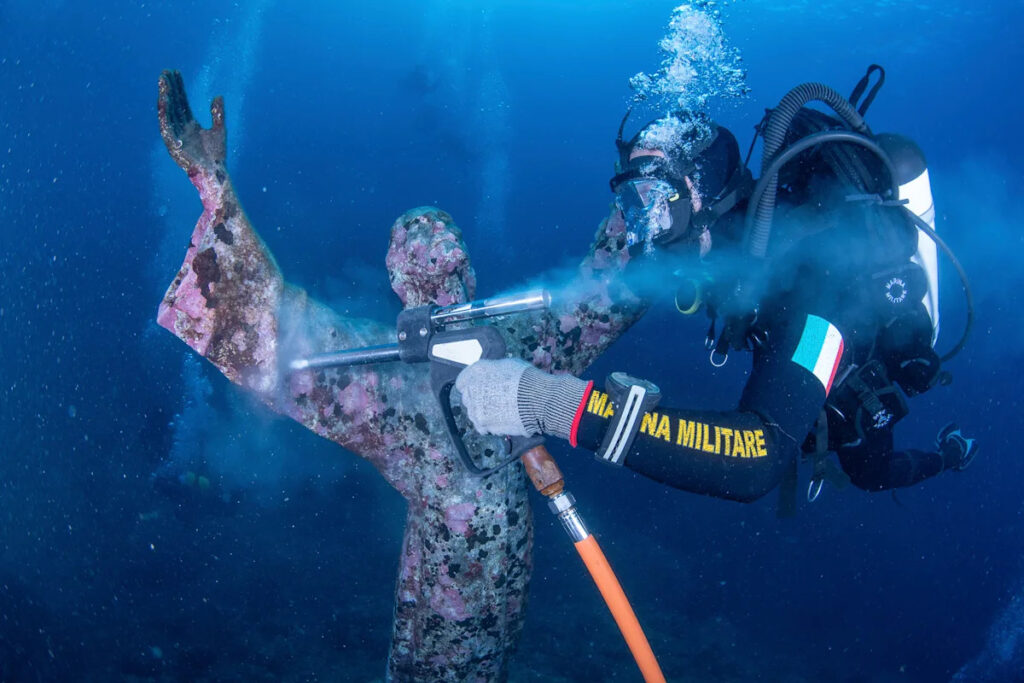ROME (AP) — Police divers have cleaned one of the biggest underwater attractions of the Mediterranean, using pressurized water hoses to remove crustaceans from the “Christ of the Abyss” statue that was placed on the seabed off Italy’s northern coast in 1954 as a memorial to those who have died at sea.
The 2.5-meter (yard) tall bronze statue, depicting Christ with his hands raised in blessing, was made using the melted-down medals of Italy’s fallen soldiers, canons and ships and is appreciated here as a potent symbol of sacrifice in World War II. Similar statues are found off Key Largo, Florida and in Grenada.
The statue is located about 300 meters (yards) off the beach between the resort towns of Portofino and Camogli, on Italy’s northern Ligurian coast, at a depth of around 18 meters (yards).
The archaeological office of Italy’s Culture Ministry says that, because of its proximity to the coast and relatively shallow depth, the “Christ of the Abyss” site is the most frequented dive spot in the Mediterranean. The site, located in the bay of San Fruttuoso, also draws kayakers and paddleboarders since the statue can be seen from the surface.
Every year, police divers carefully water-blast the statue to remove bacteria and corrosive crustations that have accumulated. The cleaning, which this year took place on Aug. 19, uses seawater itself and causes no damage to the bronze or the marine ecosystem as the microorganisms are dislodged and released back into the sea, said Alessandra Cabella, art historian from the Ligurian archaeology superintendent’s office.
“There are a ton of marvelous fish who come to watch,” she said in an interview Thursday. “It’s truly an activity with zero impact on the environment.”
The water-blasting technique has been in use since 2004, when the statue was taken from the water for a full restoration after a hand had broken off and was re-attached.
It was then that restorers realized that the previous underwater cleaning method – scraping the bronze with metal brushes to remove the crustaceans – had caused irreparable damage to the statue’s surface, creating crevices in the bronze patina that attracted even more marine material to accumulate.
The statue is also delicate because when it was made, by Italian artist Guido Galletti to honor an Italian diver who died in the area, it was filled with cement and iron rods to stabilize it on the seabed. The presence of the iron has helped corrode the bronze from the inside, Cabella said.

